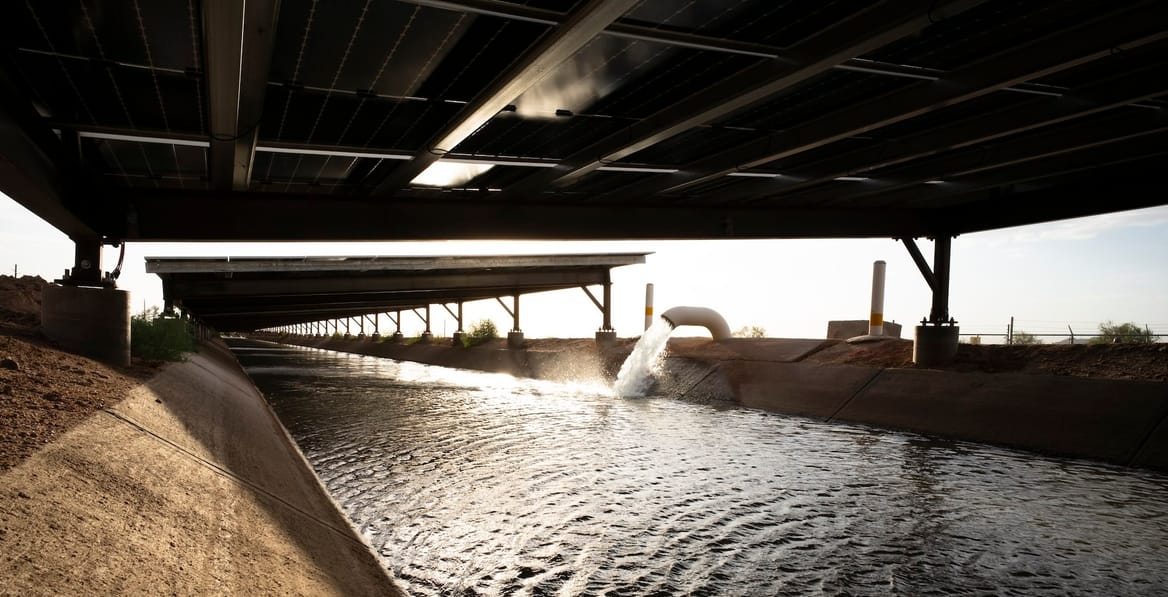The US is about to get its first solar-covered canal – Canary Media
“Cows, cars, and couches somehow always end up in the canal,” said Lepley.
These requirements — plus the added steel and concrete materials — make the systems more expensive and technically complex than conventional ground-mounted solar arrays on trackers.
Along with George Cairo Engineering, the engineer of record for the Casa Blanca Canal solar project, Tectonius has evaluated a number of designs for the over-canal hardware. “We looked at steel use, concrete use, solar panel costs, wind lift and weight, power production, and access,” said Lepley. The engineers ultimately arrived at a patented, modular, and prefabricated design that makes it safe to build over moving water without impeding canal flows or access.
The long, narrow solar array design would snake along the line of the canal and tap into the local electrical distribution grid every 1,000 feet, or every one megawatt.
In general, Lepley said the capital cost for canal solar is roughly double that of land-based solar due to the cost of steel and foundations needed to support the PV panels above a canal. Lepley did not disclose the per-megawatt-hour cost of the design, but said his models and lab data suggest that in hot, arid environments, canal-based solar is “more valuable” than land-based solar, helping chip away at the higher upfront capital cost.
“Canal solar allows for greater power production per land size, cleaner water, less power transmission losses, and significant reduction in evaporation,” he said.
Lepley’s studies detected a 1.9 percent energy boost in solar power generation, owing to a reduction in infrared radiation reflected from the ground. The boost is equivalent, on a system-wide scale, to 21 gigawatt-hours worth of electricity or $2.3 million per year, according to the engineer.
With this plan, “we’ve passed those savings on to the ratepayers and prevented a huge amount of CO2 from warming our atmosphere, all without bulldozing vast tracts of the Sonoran Desert.”
While this just-imagined market is still at the pilot stage, the math suggests the potential is much bigger. Covering the entire 8,000 miles of canals and waterways managed by the Bureau of Reclamation with solar panels could generate over 25 gigawatts of renewable energy and reduce water evaporation by tens of billions of gallons, according to a letter sent to Interior Secretary Deb Haaland and Bureau Commissioner Camille Touton in 2023 by a coalition of more than 100 climate and environmental groups.
The Casa Blanca project, set to connect to the distribution grid at the end of summer, will give the U.S. its first look at this new possibility for generating clean energy.


